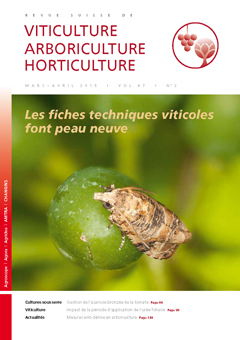
Issue 2 - March - April 2015

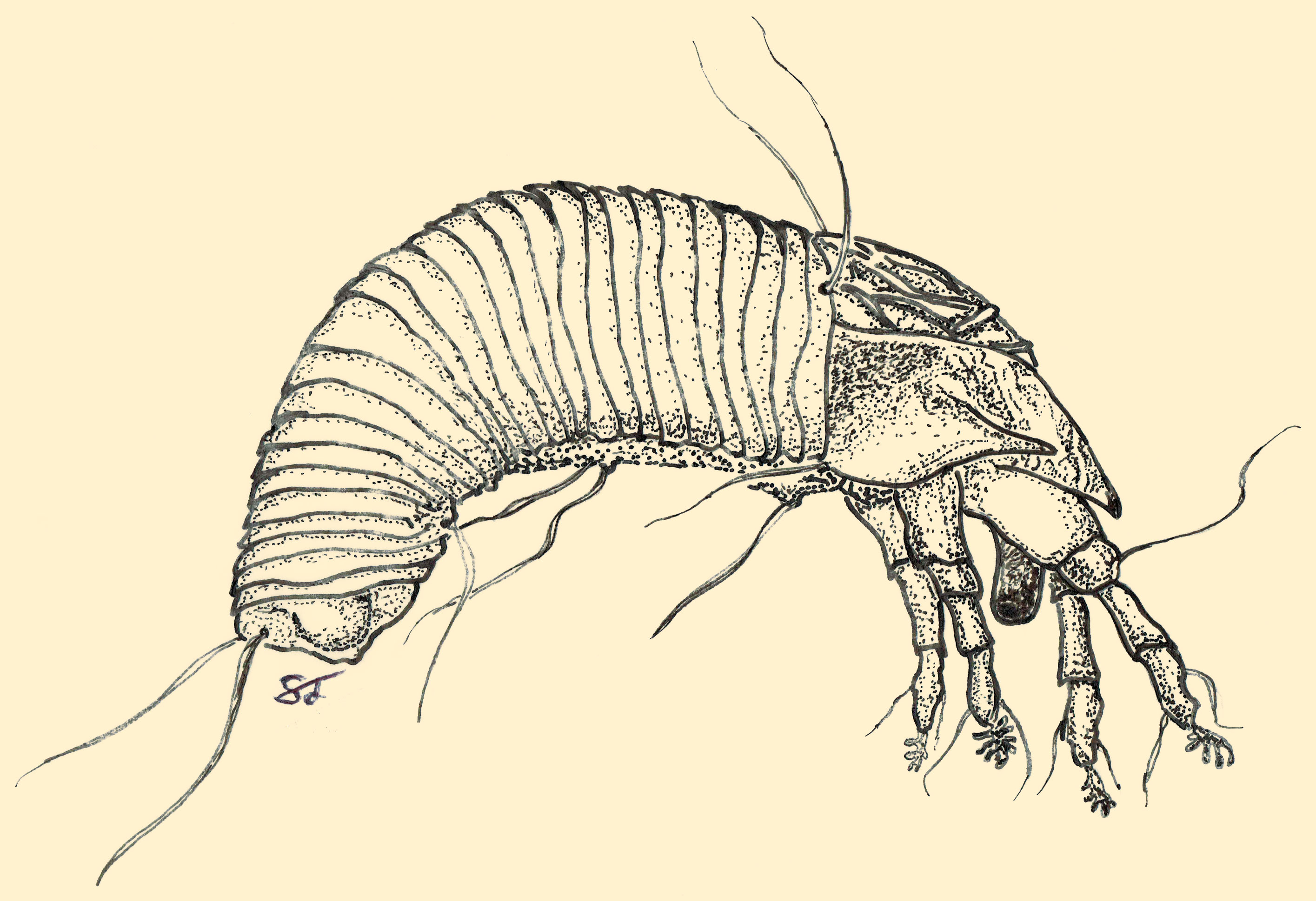
Abstract in open access
The acaricidal effect of wettable sulfur against the tomato russet mite (Aculops lycopersici) was investigated through two experiments conducted under greenhouse conditions. Results indicate that a curative application of sulfur is as effective as the active ingredient abamectine, the only compound to be registered against A. lycopersici in Switzerland. However under the severe conditions tested with a high inoculation dose of mites, its preventive application seemed to be less effective. We propose IPM strategies adapted to the Swiss tomato production schemes and regional climatic conditions, taking into account previous infestations experienced by the grower.
Keywords: Aculops lycopersici, TRM, IPM, Sulphur
E-Mail: serge.fischer@agroscope.admin.ch
Adress: Agroscope, 1260 Changins/Nyon
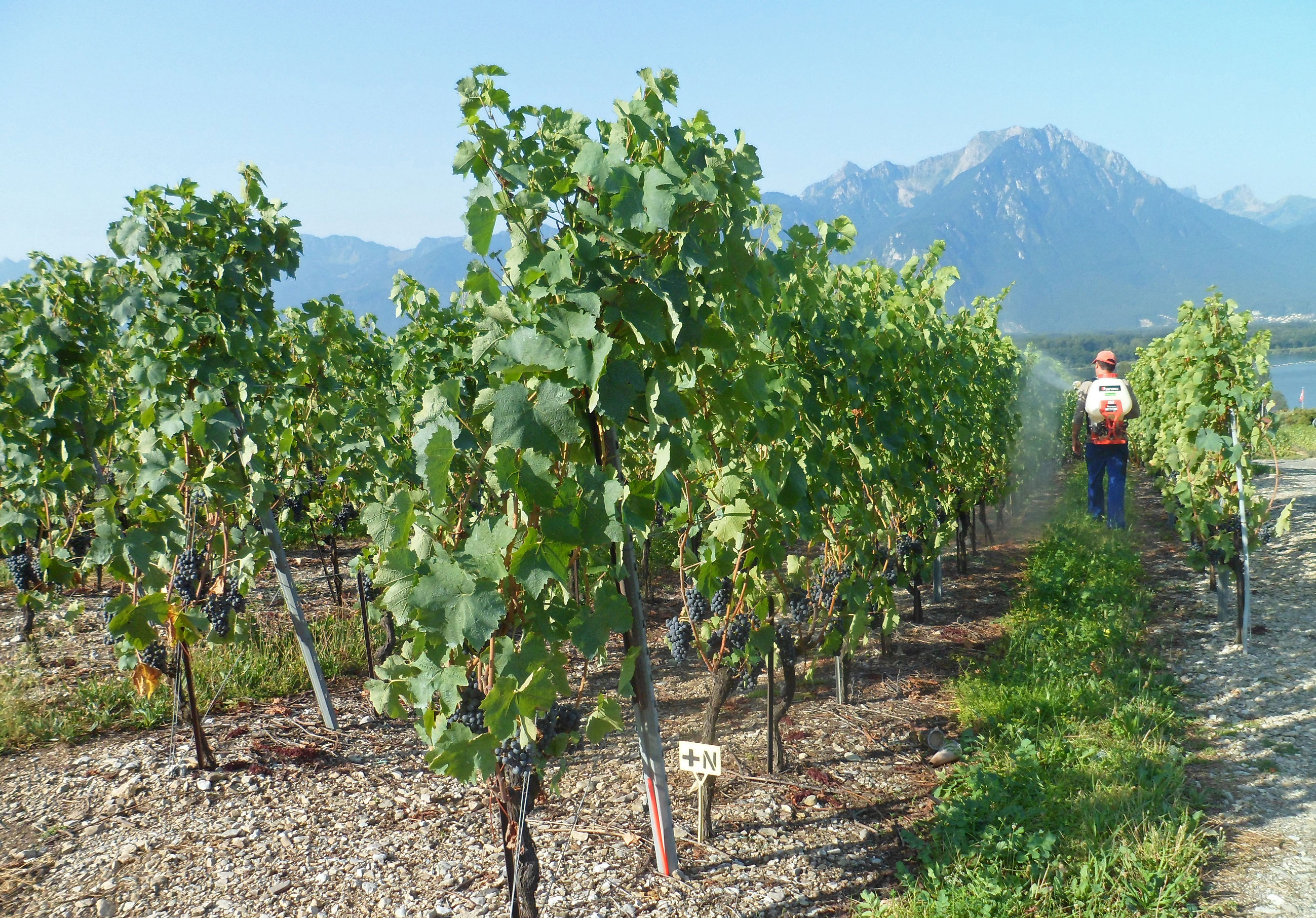
Abstract in open access
In a situation of deficiency in grape must, the yeast assimilable nitrogen (YAN) can be enhanced through foliar nitrogen fertilization on the vines. A trial was carried out at Agroscope, in which foliar urea was applied on the vines (Vitis vinifera L. Chasselas), at flowering or at veraison. The use of 15N-labelled urea (10 atom% 15N) allowed describing the effect of the period of supply on nitrogen distribution in the vine. Bunches showed the highest concentration N originating from foliar urea among all of the organs during both of fertilisation periods. The highest YAN in the must, however, was obtained when the urea was applied during veraison. Foliar urea on the vine is significantly more efficient when applied at veraison with the aim of increasing the YAN concentration of a nitrogendeficient must.
Keywords: 15N-labelled urea, Chasselas, yeast assimilable nitrogen, foliar fertilisation, partitioning
E-Mail: thibaut.verdenal@agroscope.admin.ch
Adress: Agroscope, 1009 Pully
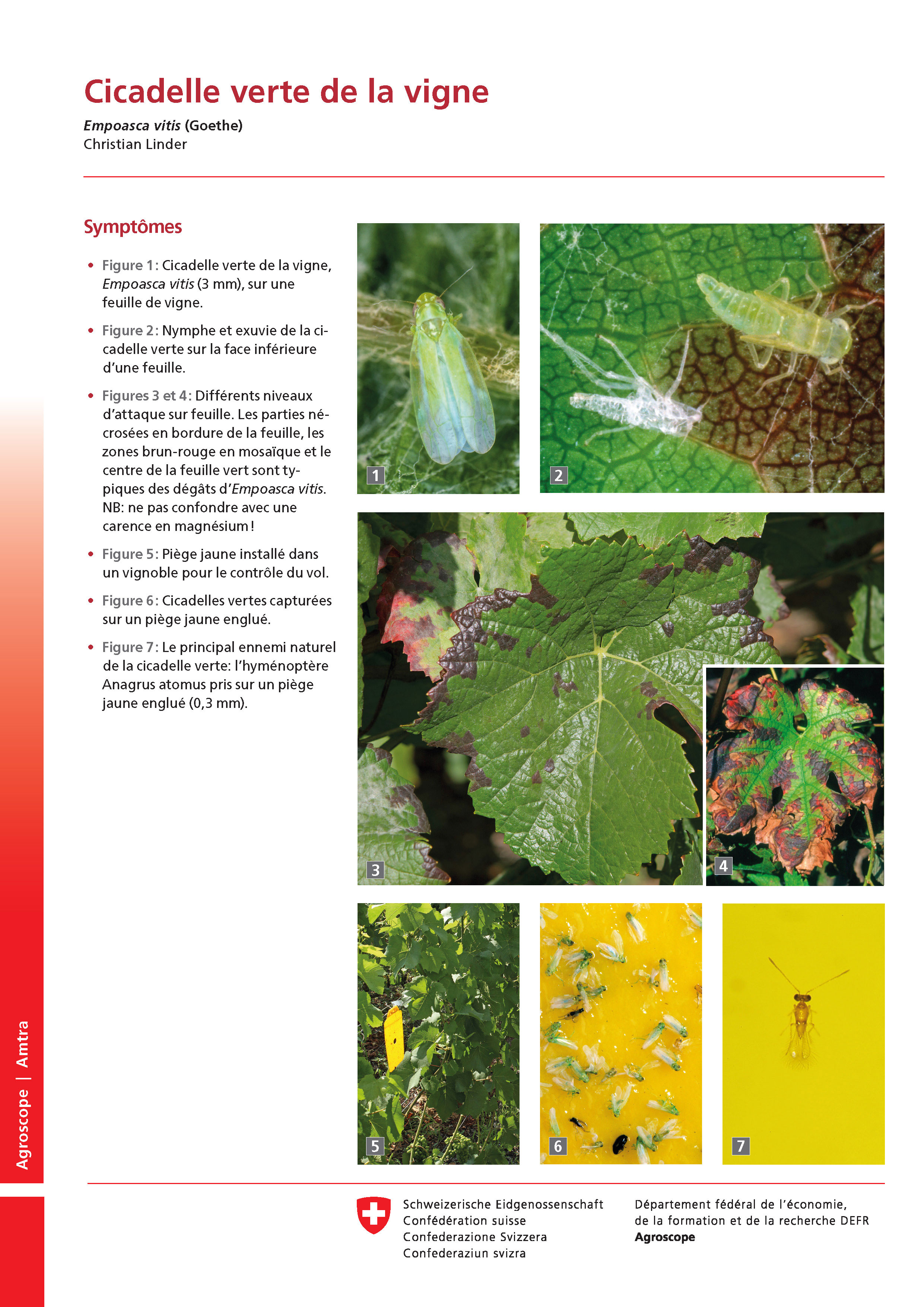
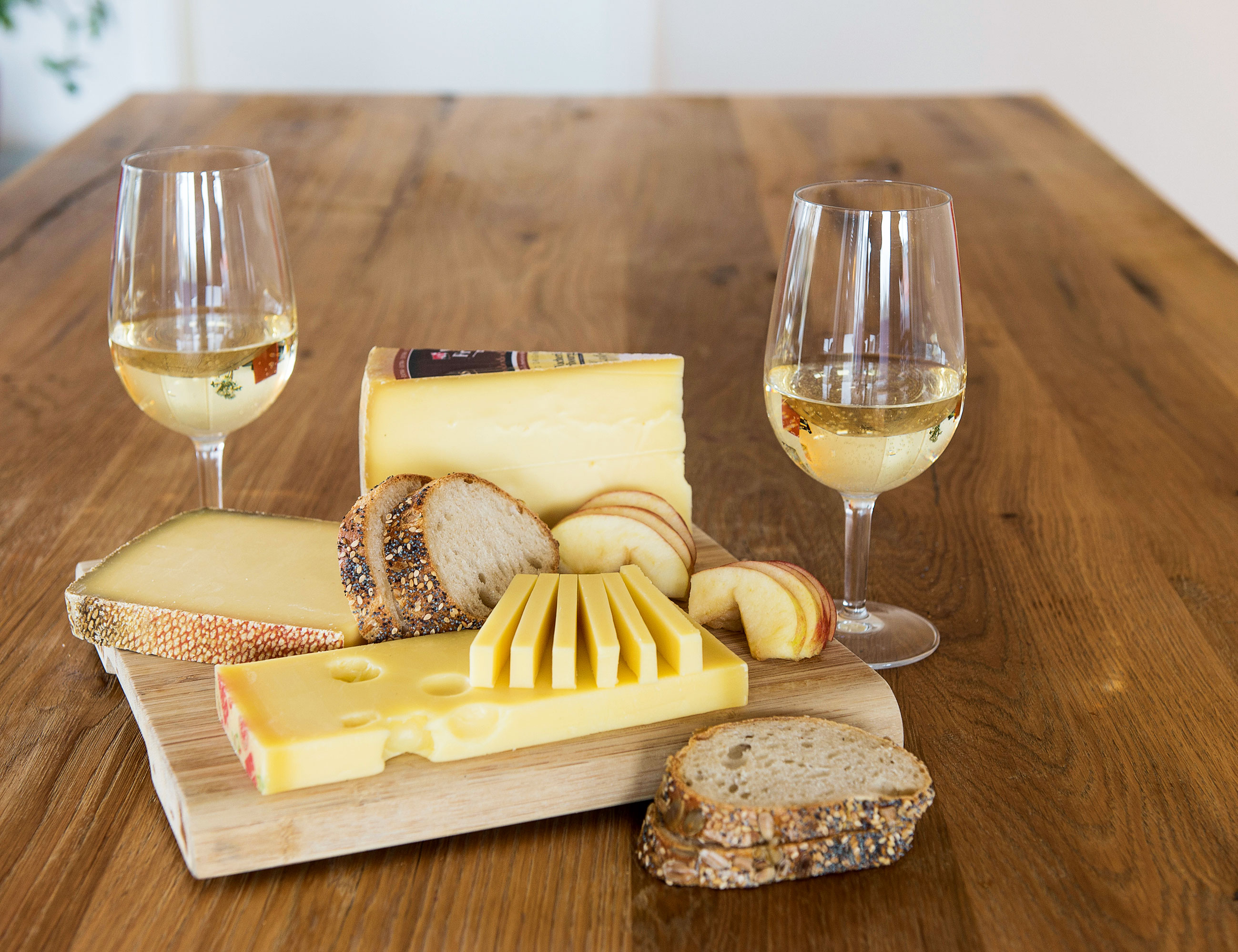
Abstract in open access
There are many guides on the topic of food pairing or food and wines combination, but only few scientific studies aim on this issue. In this study the combination of six Swiss white wines (Chasselas, Petite Arvine, Johannisberg, Müller-Thurgau, Pinot Blanc and Chardonnay) with six Swiss cheeses (Gruyère, Vacherin fribourgeois, Etivaz, Appenzeller, Emmentaler and Sbrinz) was tested. A trained panel evaluated the flavour equilibrium of the 36 combinations; among them 8 combinations were selected to be rated on a hedonic scale by 182 consumers. Using a sequential testing protocol (first the cheese and then the wine) the results showed that all wines dominated the cheese flavors. Among the 8 pairings selected for the hedonic test, consumers preferred Müller- Thurgau with Gruyère and Chasselas with Etivaz. Finally, for which concerns the aroma, wines with stronger acidity and low-aromatics seem to get along better with the salty and fruity cheeses of this study.
Keywords: food pairing, cheese, wine, Switzerland, sensory, consumers
E-Mail: pascale.deneulin@changins.ch
Adress: School of Engineering at Changins
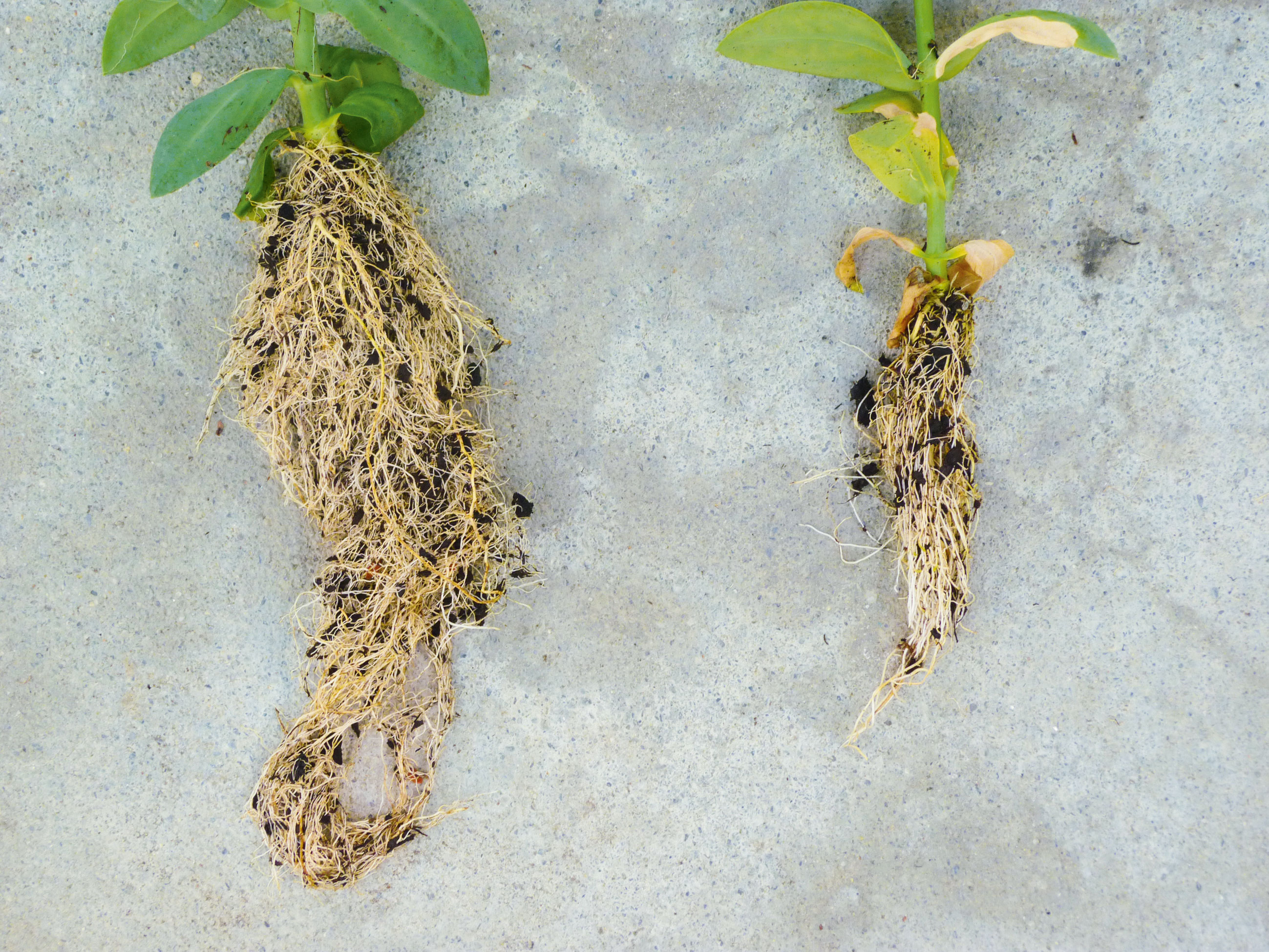
Abstract in open access
Lisianthus (Eustoma russellianum ssp. grandiflorum) is a high-value ornamental plant, grown for its cut flower. Its culture is however made difficult by its high sensitivity to various soil fungi and oomycetes and by its long duration. This is why, in addition to the prophylactic and chemical controls that reached their limits, a microbiological alternative has been tested to both control Pythium spp. and favour young plants’ growth. Therefore, three fungi acting potentially as biological control agents (BCAs) and/or plant growth promoting agents (PGP) were assessed in two experiments. The results showed a very good efficiency of Gliocladium catenulatum and Trichoderma harzianum against various Pythium in the in vitro experiments as well as a strong capacity of Glomus intraradices for increasing young plants’ growth in vivo.
Keywords: BCA, PGP
E-Mail: yannick.fleury@agroscope.admin.ch
Adress: Agroscope, 1964 Conthey
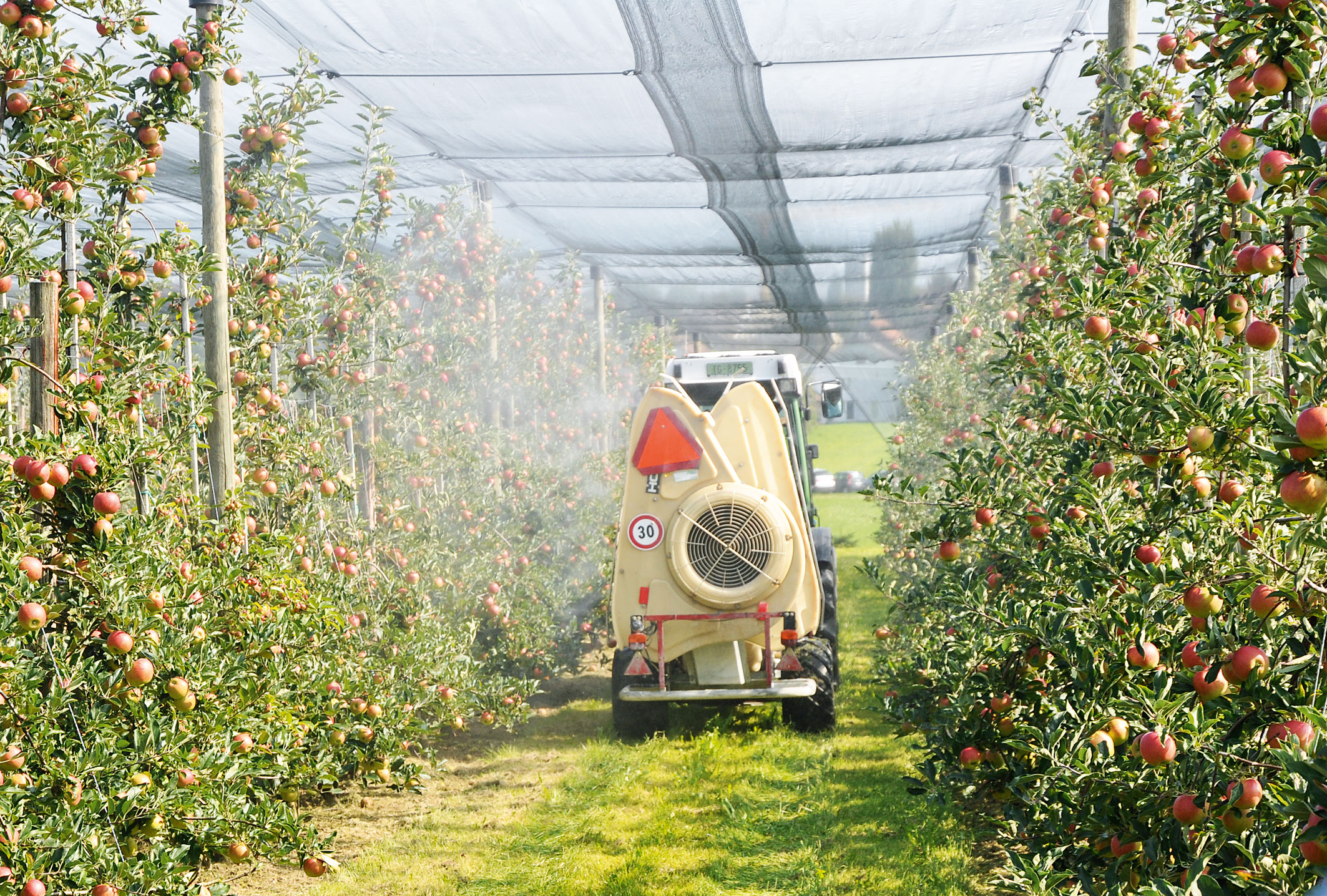



 Download of full issue
Download of full issue
 Download article
Download article